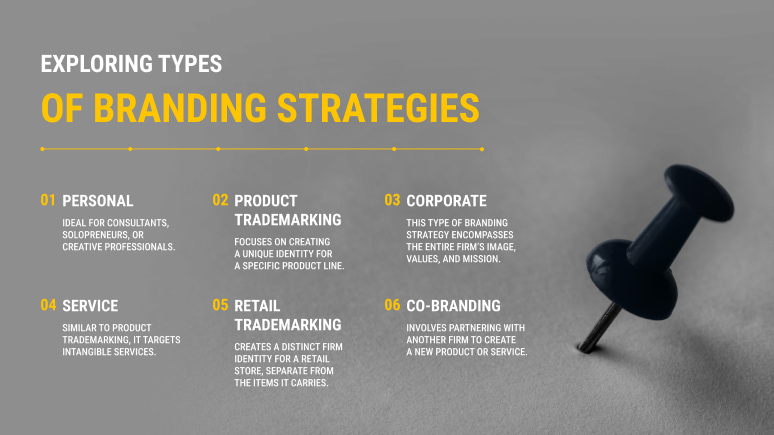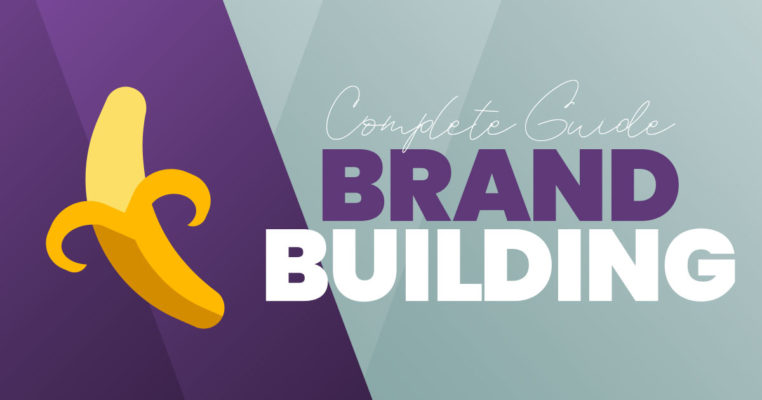A robust identity is a small firm’s secret weapon in today’s marketplace. It sets you apart, builds client trust, and fosters loyalty. However, for many small firms, creating a memorable identity can feel like a luxury they can’t afford.
Fear not! This guide will unveil powerful trademarking tactics that are easy on the wallet. We’ll explore how to:
- Leverage the tools you already have.
- Build relationships within your community.
- Harness the power of web platforms to craft a firm that resonates with your ideal clients.
With creativity and tactical thinking, you can implement digital branding strategies that position you for long-term success without breaking the bank.
Leveraging Digital Branding Strategies
Google is a treasure trove of cost-effective opportunities for small businesses. Web platforms, content marketing channels, and search engine optimization (SEO) tactics offer unparalleled reach and engagement potential.
Unlike traditional advertising, web trademarking lets you get your ideal audience in Hamilton and beyond with laser focus. It maximizes your return on investment. Here are branding strategy examples of leveraging these web avenues to build a robust presence.
Mastering Social Media for Brand Building
Platforms like Facebook, Instagram, and Twitter are powerful tools. They are for crafting a compelling narrative. Here’s how to maximize their impact:
- Craft Compelling Content. Tailor your content to each platform’s strengths. Share engaging visuals on Instagram. Spark conversations on Twitter. Offer in-depth content on Facebook.
- Find Your Voice. Develop a consistent, firm voice that reflects your personality and values. Use humour, storytelling, or industry expertise to connect with your audience.
- Engage and Respond. Web platforms thrive on interaction. Respond to comments, host live Q&As, and run polls as a brand strategy example to foster a sense of community around your firm.
Successful trademarking examples:
- Dollar Shave Club. This company used humour and irreverent content on YouTube. It’s to build a massive following and establish a disruptive firm voice.
- GoPro. By leveraging user-generated content (UGC) on Instagram, GoPro showcases the power of its cameras. Meanwhile, they are building a community of passionate users.
Content Marketing: Telling Your Brand’s Story
Content marketing allows you to establish thought leadership, attract clients, and build trust. Here’s how to use it effectively:
- Develop a Content Tactic. Identify your firm’s story, TA, and content goals. Will you focus on blog posts, informative videos, or downloadable e-books?
- Align Content with Trademarking. As part of your digital branding strategy, ensure your content reflects your firm’s voice and values. Offer valuable insights, industry news, or helpful tutorials to showcase your expertise.
- Optimize for Local Reach. Consider local SEO. Do it by incorporating relevant keywords and geo-targeting to attract clients in Hamilton.
Tactics for engaging your Hamilton clients:
- Highlight Local Success Stories. Feature testimonials from satisfied clients in Hamilton showcase projects you’ve completed in the area.
- Partner with Local Influencers. Collaborate with local web personalities who resonate with your TA. It’s to amplify your message.
- Host Local Events. Organize workshops, webinars, or networking events relevant to your industry. It’s to connect with potential clients face-to-face.
Implementing these types of branding strategies will allow you to develop a robust web presence within your budget. Remember, consistency and quality data creation are key to building lasting loyalty.
Exploring Types of Branding Strategies

Small firms need a powerful identity to stand out. Here’s the recipe for success:
- First, define your target audience – who are you trying to reach? Then, craft a unique identity that reflects your values.
- Consistency is key – maintain a unified voice across all platforms.
- Finally, deliver exceptional client experiences to build trust and loyalty.
Need more details?
Here’s a breakdown of critical tactics and how they can be applied:
- Personal. Ideal for consultants, solopreneurs, or creative professionals. It involves leveraging your expertise and personality to establish yourself as a thought leader in your arena.
- Product Trademarking. Focuses on creating a unique identity for a specific product line. This tactic involves crafting a memorable image, packaging design, and messaging that resonates with your TA.
- Corporate. This type of branding strategy encompasses the entire firm’s image, values, and mission. It shapes how clients perceive your firm as a whole.
- Service. Similar to product trademarking, it targets intangible services. Focus on the experience you provide and the value proposition.
- Retail Trademarking. Creates a distinct firm identity for a retail store, separate from the items it carries. It involves crafting a unique shopping experience and atmosphere.
- Co-branding involves partnering with another firm to create a new product or service. This tactic allows you to do many things. First, you can reach new markets and leverage your partner’s existing client base. Second, you can enhance firm value and associate yourself with a well-respected firm. Third, you can share resources and expertise and collaborate to create a stronger offering.
The following is the description of co-branding strategies, which use tactical partnerships to open new markets and elevate firm value. By combining your firm with another trusted entity, you gain access to a broader audience and can also establish a reputation for quality through association.
What Are Branding Strategies? Demystifying the Basics
For small firms, a trademarking tactic is about something other than expensive ad campaigns. It’s about crafting a clear and consistent identity. It must resonate with your TA. Think of it as your firm’s personality – what it stands for, how it communicates, and the experience it delivers. A robust tactic is crucial for several reasons:
- Client Recognition and Trust. A memorable identity helps clients recognize and trust your firm. It fosters loyalty and repeat purchases.
- Competitive Advantage. A clear message differentiates you from competitors. It makes you a more attractive choice for your ideal clients.
- Employee Engagement. A robust firm identity fosters a sense of purpose and belonging among employees, leading to increased engagement and productivity.
Here are the examples of core elements of a winning branding strategy:
- Firm Identity. It encompasses your logo, colour scheme, fonts, and visual style. It’s the aesthetic that represents your firm at a glance.
- Firm Voice. It is the personality that shines through in your communication. Is it friendly and approachable, or professional and authoritative?
- Firm Values. The core principles and beliefs guide your firm decisions and client interactions.
Innovative tactic on a budget:
- Community Engagement. Partner with local charities or sponsor events as a brand strategy example to establish yourself as a positive force in your community.
- Cause Marketing. Align with a cause your TA cares about and donate some of your proceeds.
- Client Advocacy Programs. Encourage satisfied clients to share their positive experiences through testimonials or referral programs.
These tactics show that small firms can develop impactful identities despite limited resources. Those will resonate with their TA and position them for long-term success.
Brand Strategy Examples: Success Stories
Hamilton is rapidly becoming a hub for entrepreneurial activity. It’s mainly for small firms with fresh and innovative approaches to trademarking. This city is brimming with creativity. There is a surge in startups developing unconventional tactics to protect intellectual property. From clever firm names to unique product designs, Hamilton’s firm scene is an entire of firms pushing the boundaries. Let’s delve deeper into two specific examples that showcase this exciting trend:
- The Spice Niche. This specialty spice shop in James North didn’t rely on flashy advertising. Instead, they focused on building a firm identity as a trusted source of high-quality, ethically sourced spices. They host educational workshops and cooking demonstrations. It fosters a sense of community and expertise. Their web presence is a vibrant blend of stunning spice photography. There are helpful recipe suggestions and collaborations with local chefs. It showcases their commitment to the Hamilton food scene.
- Hammerheads Coffee Co. This local coffee roaster embraced a playful and approachable firm voice. Their logo features a cartoon hammerhead shark. And their web platforms are filled with witty captions and behind-the-scenes glimpses. They take part in local farmers’ markets and events. It connects them with clients personally and builds a loyal following. Commitment to ethically sourced beans and local collaborations further strengthens the firm identity.
These branding strategies examples show the power of focusing on your unique strengths and building genuine connections within your community. Leverage web platforms, foster a sense of expertise, and engage with local initiatives. Then, your firm can carve out a robust firm identity without breaking the bank. These tactics offer valuable insights for other small firms, mainly for those looking to build a loyal following.





